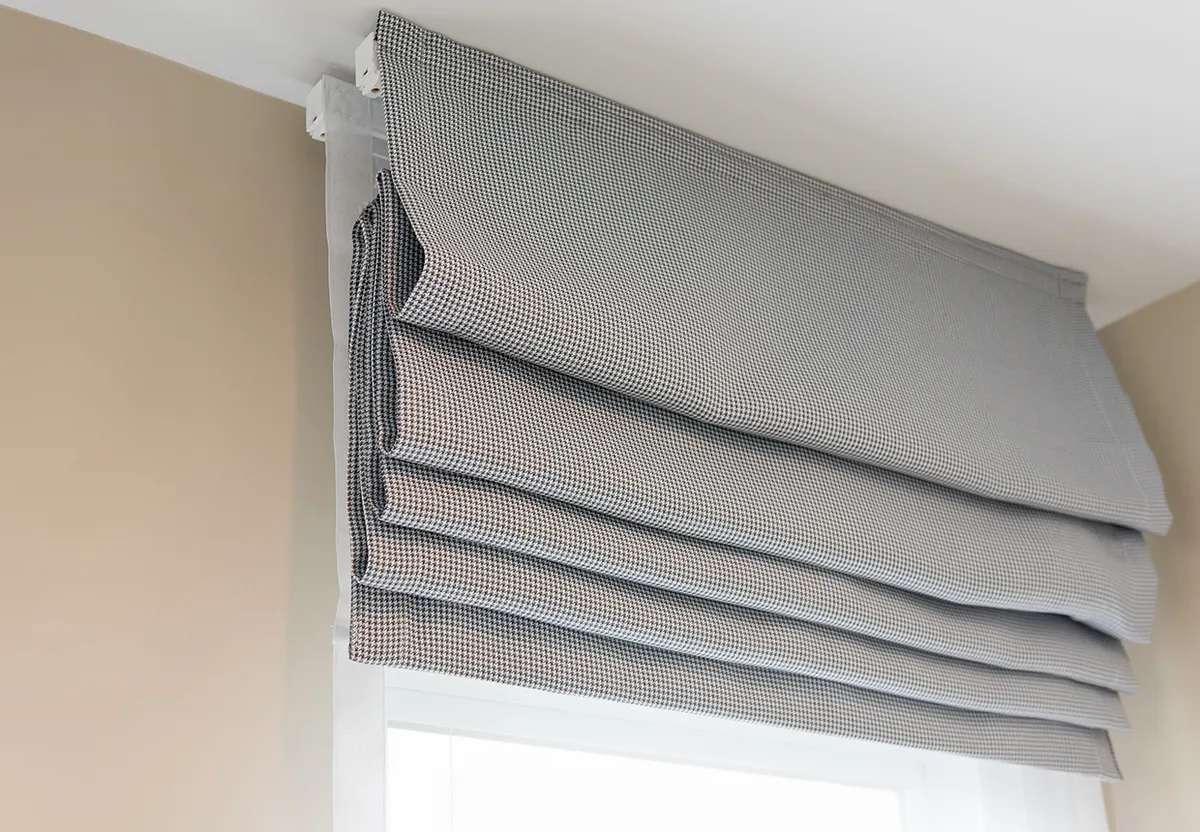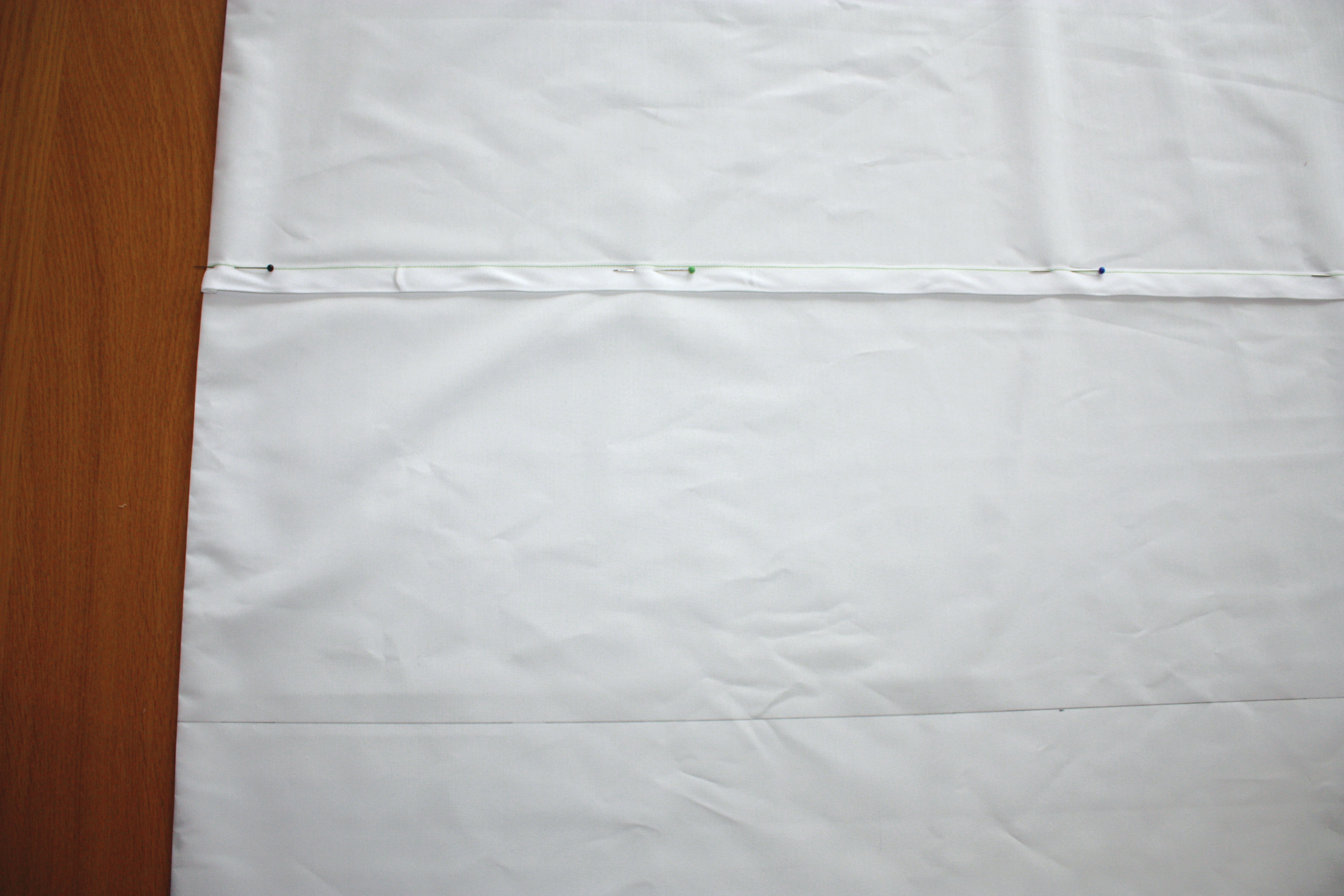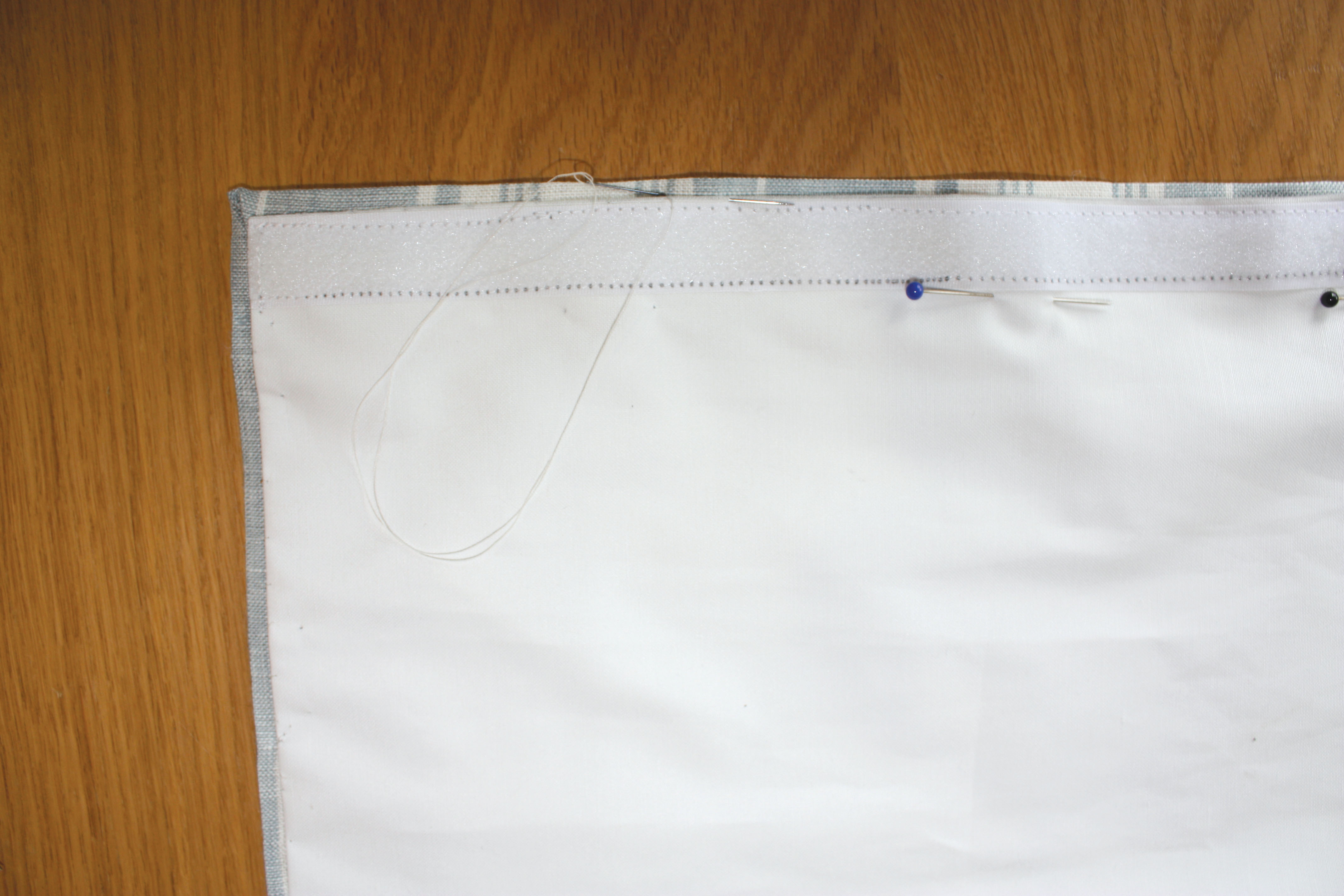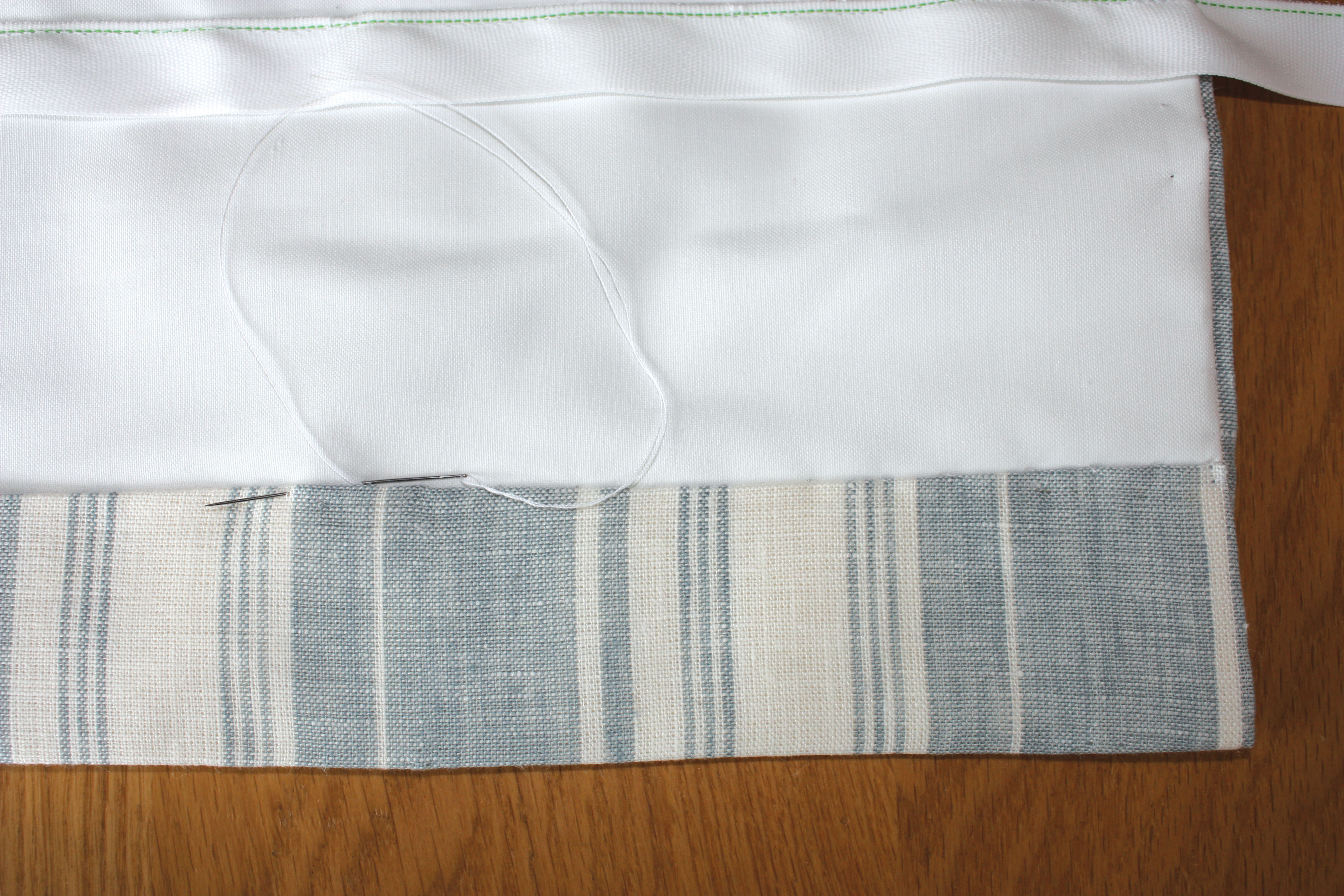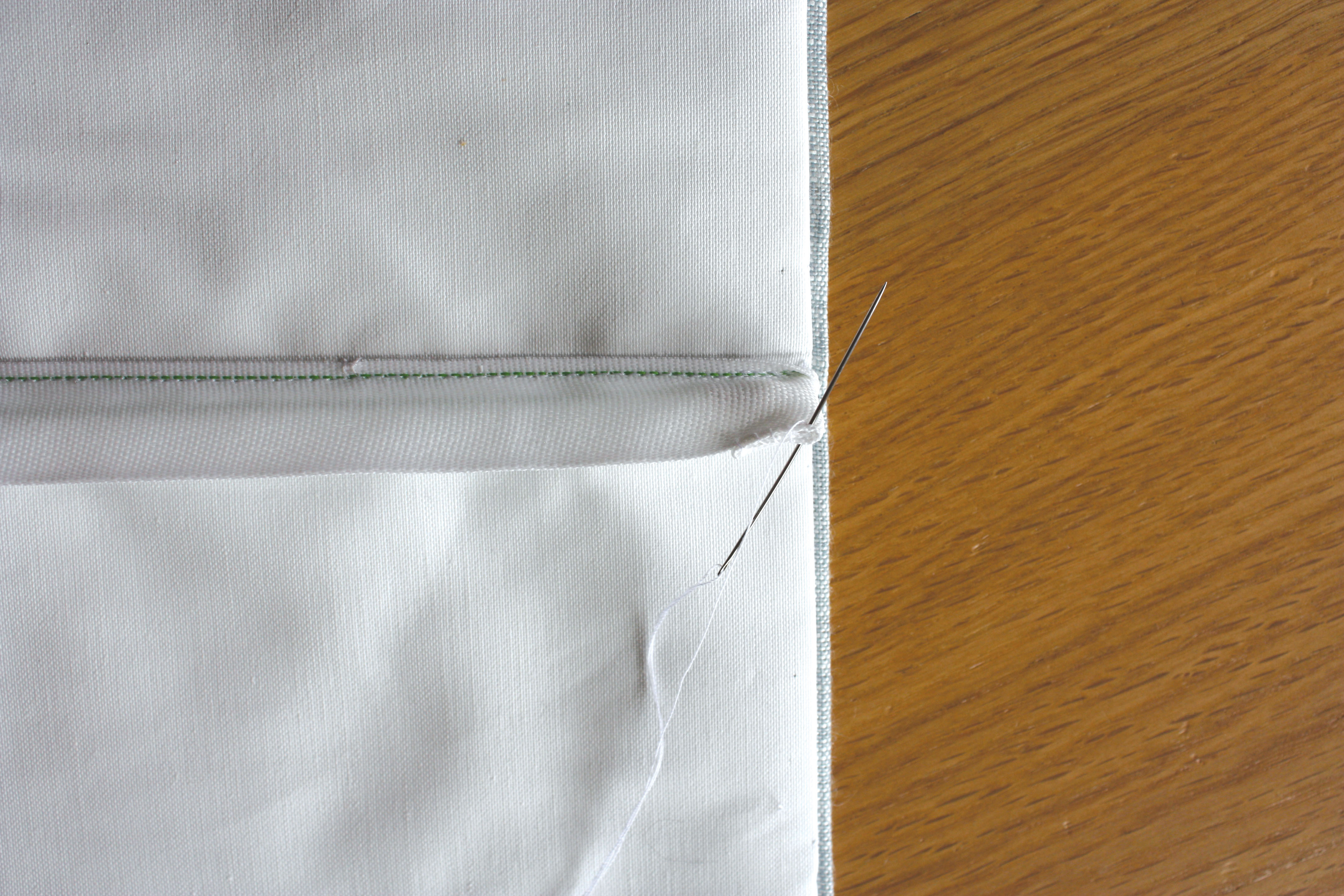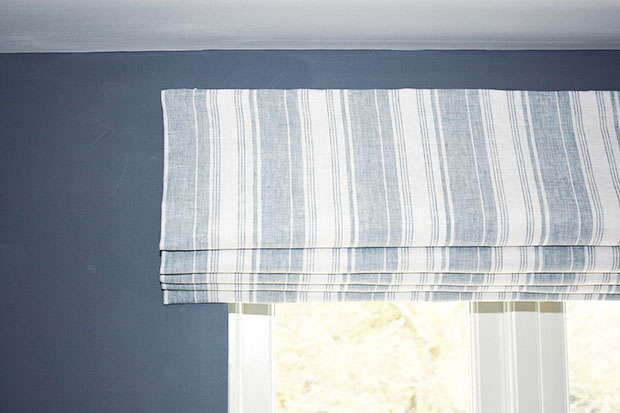Roman blinds are basically a large piece of fabric, hemmed, layered and sewn in a series of clever ways to create a stylish cover for your windows. You can add a lining and interlining and make them blackout or thermal.
They require careful measuring and a little patience, to ensure your blind fits perfectly in your window and is straight! But if you take your time, measure accurately and keep checking as you are going then you can make your own.
There are also different ways to hang your blind – you can use a wooden batten and screw eyes to thread your cord through, then wind it around a cleat mounted on the wall.
However, since we discovered the side-winder mechanism, we have never looked back! The blind is lowered and raised by pulling the chain (just like on a roller blind) and you don’t have all those strings in the way, plus the blind pulls up more neatly, too.
There are several different methods you can use when making Roman shades and most people start off by making them on a sewing machine (check out the best sewing machines for beginners). However, for a really professional-looking finish, you shouldn’t be able to see any machine stitches on the front at all, and nearly the whole blind is made by hand.
We have tried many, many different ways of making Roman shades over the years and perfected our techniques and we have found that this is the most accurate way, with the neatest finish.
We’re here to show you how easy it is to make roman shades, one step at a time.
Main fabric
How to choose the right fabric, lining and interlining for your Roman blinds can feel a bit daunting at first, but it’s actually pretty straightforward once you get the hang of it. You can use any fabric when making a Roman blind, but a curtain-weight fabric is the best to give your blind somebody, which will make it hang better. To start shopping for curtain fabrics, see our guide to the best upholstery fabrics
If your finished blind is wider than the fabric width then you’ll need to join it together before you make your blind When this happens you’ll need to buy extra fabric to allow for the pattern repeat.
Be sure to match the pattern carefully and instead of having the seam running down the middle, join pieces on either side of the full width because this works better visually. For a really individual blind, you could make it in patchwork, appliqué a motif or embroider words on the fabric.
Lining fabric
It’s best to line your blind, so that you can hide your Roman blind tapes and make them invisible from the front.
Lining can also add extra weight to your blind, improving the shape of the drape, and choosing the right lining for your needs can also boost the amount of light your shades block, or improve their thermal qualities.
Cotton sateen lining fabric works well and this can be bought in a variety of colours
Blackout lining is handy if you want to block out more light.
Interlining fabric
We also interline when we are making roman shades as the finished blind always hangs better with it placed between the main fabric and the lining, plus it gives the finished blind a slightly padded, more professional look.
Roman blind kits – mechanisms, cords, rods
There are some really great kits out there that include all the fitting mechanisms, rods and fittings you need to finish making your blind. We like:

Sew more practical homewares for your space!
If you’re on the hunt for making your own soft furnishings for your home, don’t forget to take a look at our sister posts, how to make roller blinds, how to make curtains, and how to make a lampshade.
Fabric and interlining amounts will depend on the size of your window, so before you get shopping for fabric, you’ll need a tape measure and a bit of time to carefully calculate the space that your blind needs to fill.
First you need to decide whether your Roman blind is going to sit on the inside or outside of the window recess. Think about what suits your window best, marking the wall if necessary to give you an idea. If it’s going to sit inside then measure the width and drop of the inside of your window frame.
Your blind rail will be attached to the top of the window frame and the blind will touch the windowsill, so it’s really important to measure accurately. It does need to move freely up and down though, so measure 1cm less than the width to allow for this. if your blind is going to sit outside the recess then add 5-10cm on both sides of the window width so that it overlaps the walls, and add the same to the bottom. add 10-20cm above the window.
Still not sure how to size your Roman blinds? Use the diagram below as a guide.

Now you have the measurements, you need to work out the fabric sizes you need and then cut it all out, using the following guide:
From your main curtain fabric, you will need:
Width – measured width, plus 5cm on both sides for turnings (so width plus 10cm) drop – measured drop, plus 5cm at the top and 8cm at the bottom (so drop plus 13cm).
From your lining fabric, you will need:
Width – measured width, plus 5cm on both sides for turnings (so width plus 10cm) drop – measured drop, plus 5cm at the top, no extra at the bottom.
From your interlining fabric, you will need:
Width – same as the measured width drop – measured drop, plus 5cm at the bottom.

Calculate where the tape will be sewn because this is where the rods will be inserted. The tapes should be spaced 20-30cm apart. using the measured drop, take 5cm off this measurement to allow for the blind rail. now with the measurement left, you need to work out the spaces between each tape.
The bottom space should be half the width of the other spaces and the top space will have the 5cm added to it to allow for the blind rail. For example, your measured drop is 122cm, minus 5cm, so this is 117cm. four rods is about right for a blind of this drop, so divide 117 by 4.5 (the half space is for the bottom space) and you get 26cm. So that makes your top space 31cm (26cm plus 5cm), then you’ll have three spaces of 26cm, and the bottom space will be 13cm.
It’s a good idea to draw yourself a diagram and then check against it that your measurements add up. As long as each space is between 20-30cm, it will look fine, and you can add a couple of extra cm to the top space if you need to.
You’re now ready to start making Roman blinds. Read on to discover how to make Roman blinds with step-by-step pictures.
Personalise your home special with Roman blinds
One of the best things about making your own DIY Roman blinds is you can completely personalise them to your style.
Choose a fabric which suits your style. Adjust our Roman blind tutorial so it snuggly fits your window. Add thermal lining to keep your home insulated.
You can customise these Roman blinds however you choose. Be creative, have fun with it and sit back and marvel at your beautiful new creation!
Spruce up your home with Gathered
We hope you enjoyed making DIY Roman blinds using our step-by-step guide!
Looking for more home décor projects? Learn how to make a duvet cover and how to make a doorstop.

